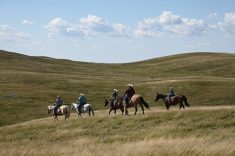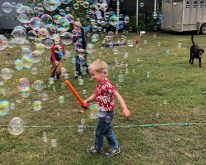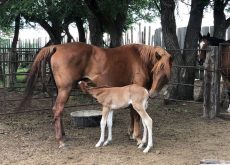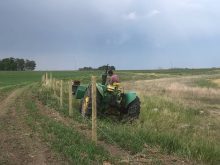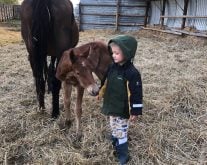Horses are still a vital tool for many ranches. When they are not being used for work, they are a good source of recreation and exercise.
Every good horse started out as a foal. A good foundation is so important for a horse’s later usefulness. As we start this four-part series on foal handling, let’s begin with halter training.
On our farm, we raise about 10 foals a year and halter training is always one of my favourite parts. Some foals are naturally curious and easy to work with, while others are more spirited and can be more of a challenge.
Read Also
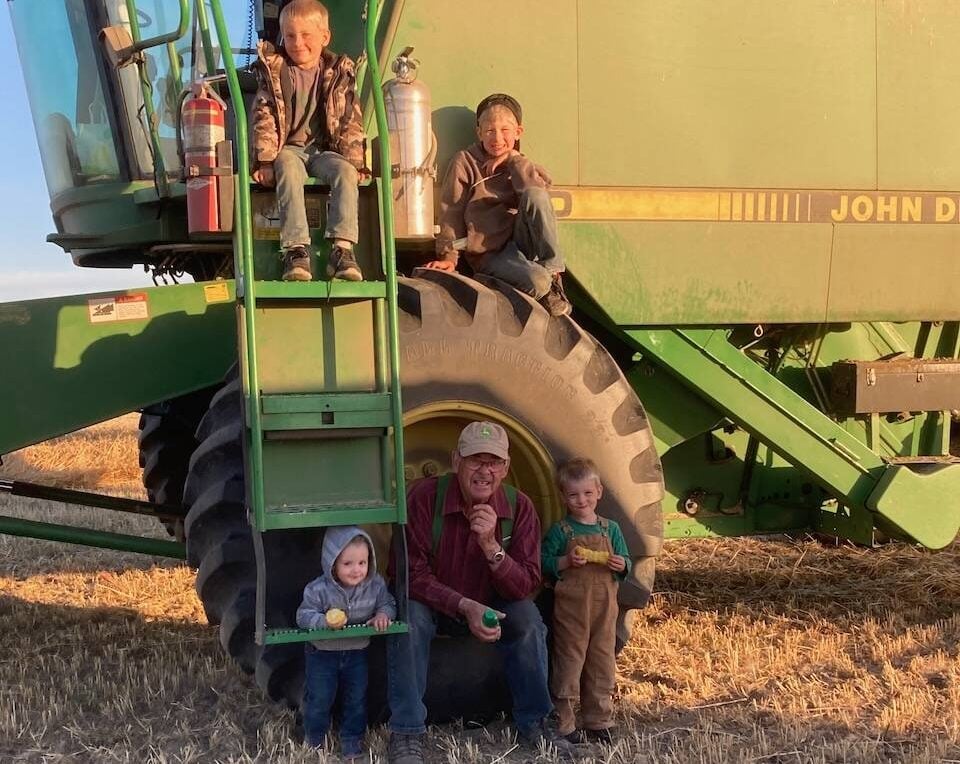
Harvest wraps up and fall work begins
At the Eppich famly ranch in western Saskatchewan, the fall harvest was successful with few breakdowns, cows and calves have been sorted and a new tractor has arrived
We usually handle our foals for the first time when they are between three days and a week old. We don’t have an overabundance of manpower, so the work gets done around all the other spring work.
I start getting hold of the foal with one arm around his chest and one around his rump. Some let you hold them, some jump up and down, or run forward or backward. Being gentle but firm, I hold them until they stand still and I can start to pet them.
It is always important to talk to them. Remember — they don’t care what you say but they do care how you say it.
Ease into it
After the foal settles down a bit and I can pet him, I start to rub the halter over him on his back and neck while still keeping a hand around his chest. Once he is OK with that, I put the halter on his nose. He may be sensitive around his face, but I try to be patient and talk gently to him. Sometimes I do up the throat latch very loosely and then slide the nose piece over his nose a few times. This allows me to handle the halter with one hand.
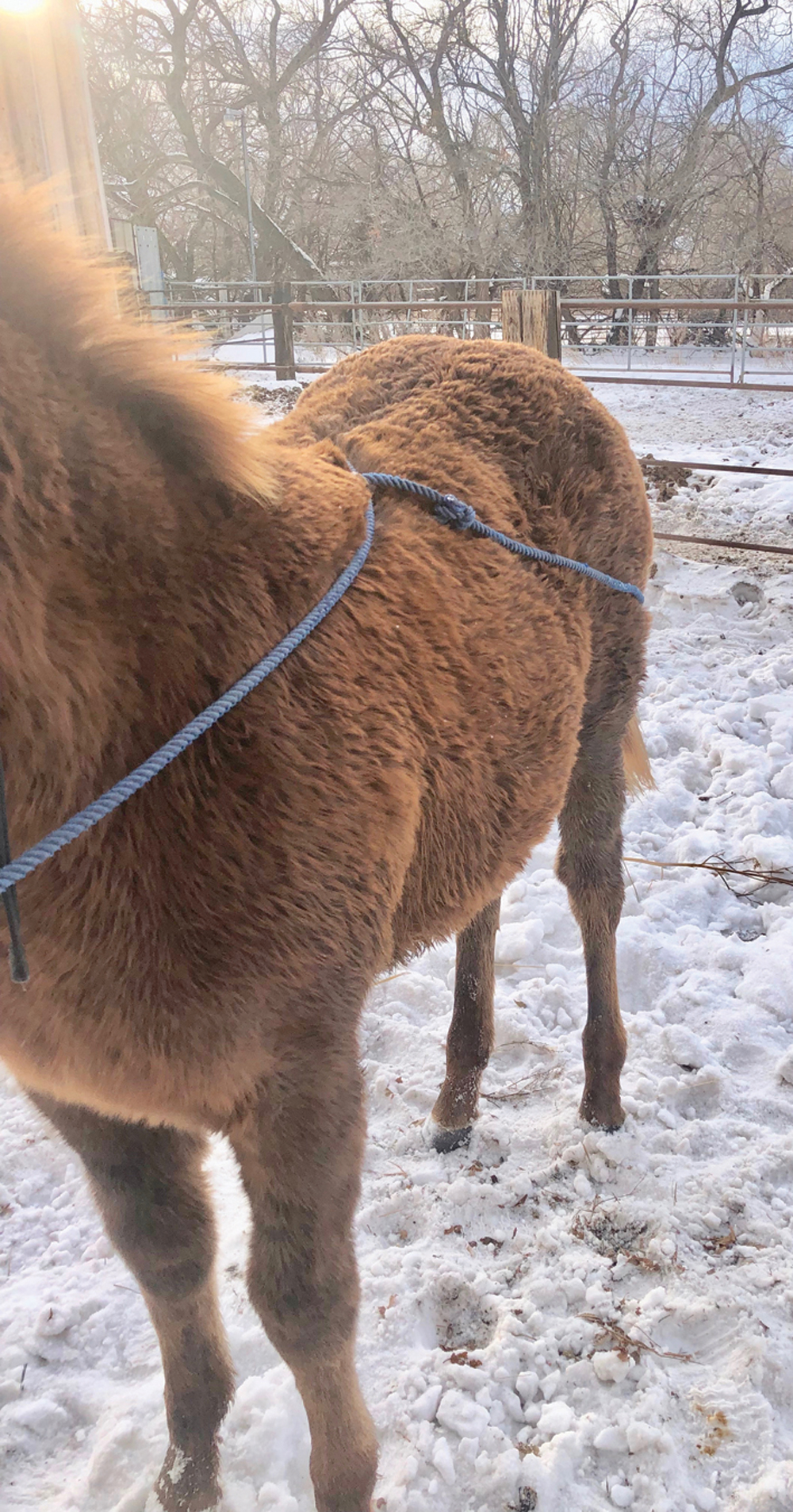
After the halter is in the proper position, I take a 10-foot lead rope and make a figure eight on the horse. I do this by folding the rope in half and while holding onto the rope tails, I place the loop over the foal’s rump. With the loop around his rump and the rope tails making an “X” across his withers, I run each tail through the back of noseband of the halter. This creates a sort of lead rope which puts pressure on his rump for forward motion but also puts pressure on his nose for changes of direction.
With my left hand on the tails of the lead rope and my right hand where the tails cross at his withers, I can start to teach him to lead. As I move forward, I put pressure on his rump. If he moves too fast, I can pull him back to me. This method both creates motion and allows you to mould the motion to what you want.
Summer recess
After about three days of handling, we usually turn our mares and foals out to pasture for the summer. In the fall, after weaning, we refresh their halter training. The first handling after a summer of fun can be a bit interesting but they do remember very quickly. I usually go back to the figure-eight method for the first refresher. Very soon they don’t need the rump rope at all. Sometimes I put them in the figure eight and then tie the rope in front of their chest instead of going through the halter. This allows me to use the lead rope independently, but I still have the back up rump rope whenever I need it.
There have been occasions when a foal was being overly stubborn or when we bought some mares with foals by their sides who had never been handled. In these situations, we have had to change our tactics a little bit and bring in more tools.
Using more tools
A lariat can be a useful tool when dealing with weanling foals. Due to their size, you may not be able to apply enough pressure with the lead rope in a figure eight if they are unfamiliar with it. By placing the lariat around his rump and gently tugging, you usually can create forward motion and keep a bit of space between you. It will tighten a bit on his rump and make him uncomfortable. Remember to loosen the pressure to give him relief as a reward for stepping forward.

Another very successful way to teach the bigger weanling to lead is a foot rope. You can use a lead rope or a lariat for this process. Place the rope around one front foot. I usually use their left front. Pull gently on the foot until he lifts the foot. He will probably stomp the foot a few times. With gentle but consistent pressure, pull his foot forward. When he puts weight on it and steps forward, give him slack. You can start asking him to walk toward you with you facing him, but as he gets better at giving to pressure, turn away from him so that he is following you. Start to lessen the distance between you until he is walking just behind you or better yet, beside you. As he learns to follow your lead you will need the foot rope less and less. Eventually you can take it off completely.
The foundation that a foal gets in early handling can make the difference between a trusting and willing partner and an unmanageable wreck waiting to happen. Halter training can be the first step in the process.
Foal Training Part 2: Getting foals used to handling their feet





